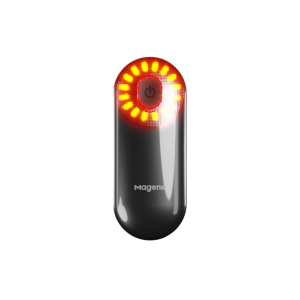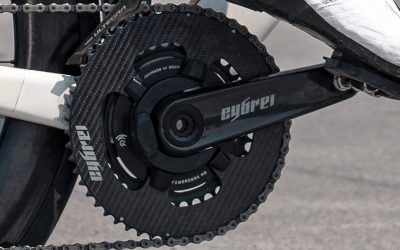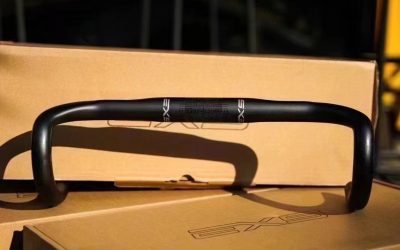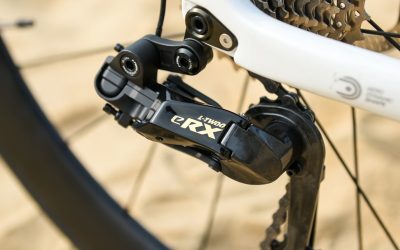
REVIEW: Magene L508 Radar Tail Light
Joe Whittingham2023-05-04T01:16:14+00:00The Magene L508 Radar is the first non-Garmin bicycle radar to hit the market. With the Garmin retailing for around $200, the more affordable Magene obviously has a lot going for it, but how does it stack up to the Garmin Varia radar? China Cycling put the two side by side to find out.
Check out the Magene L508 Radar Bike Tail Light now!
Introduction
Cycling can be a great way to get exercise, enjoy the outdoors, and commute to work or other destinations. However, it can also be dangerous, particularly when sharing the road with larger vehicles. That’s where the Magene L508 radar light comes in. This innovative device uses radar technology to detect vehicles approaching from behind and alert the cyclist with a display of LED lights. With its built-in accelerometer and automatic brightness adjustment, the L508 is designed to improve cyclist safety and awareness on the road. In this review, we’ll take a closer look at the features and performance of the L508 and see how it stacks up against other bike radar lights on the market.
What Does a Bike Radar Do?
Bike radar is a useful device for cyclists that utilizes advanced radar technology to detect objects approaching from the rear. The radar emits radio waves that bounce off objects and then uses the reflected signals to analyze their speed, distance, and direction. This data is then sent to a display unit, which can be attached to the cyclist’s bike or helmet.
The main aim of using a bike radar is to improve the safety of cyclists while riding on the road. It helps them to be more aware of their surroundings and to detect any potential hazards, such as approaching vehicles, which can then be avoided. Additionally, some bike radars come equipped with automatic brightness adjustment features, making them more visible and effective during low light conditions. Furthermore, these radars can also be integrated with other cycling technologies such as GPS to provide cyclists with additional data and functionality.
Magene L508 Technical Specifications
-
- Radar Detection Range: 140 meters
- Rear Light Brightness: 6-40 lumens
- Light Modes: Solid / Flash / Pause / Peloton / Off (but radar activate)
- Battery Life:
- 4-11h (solid mode)
- 10-16h (peloton mode)
- 15-18h (quickly flash mode)
- 11-13h (pulse mode, flash mode)
- 10-12h (rotation mode)
- 19h (only radar mode)
- 3 months (standby mode)*affected by environment and temperature
- Water Resistance Rating: IPX7
- Compatibility: Compatible with all cycling computers that support ANT+™ Radar
- Weight: 65 grams
The Magene L508 is a bike radar that utilizes radar technology to detect approaching vehicles with a range of up to 140 meters. Additionally, it also doubles up as a rear light with a brightness range of 6-40 lumens, and it has a battery life of up to 19 hours in radar mode and 11 hours in solid light mode. The L508 is water-resistant with an IPX7 rating, making it suitable for use in various weather conditions. Moreover, it is compatible with bike computers, watches, and other display devices that support the standard radar protocol. The device is lightweight, weighing only 65 grams.
The light mount is compatible with almost all the seatpost types, aero seatposts, round seatposts, and D shape seatposts,
Features
Auto Sleep Mode
The Magene L508 bike radar features an auto sleep mode that helps to conserve battery life. When the device is not in use or has been stationary for a certain amount of time, it will automatically enter sleep mode. This helps to extend the battery life of the device by reducing power consumption.
The L508’s auto sleep mode is also useful for those who may forget to turn off the device after a ride. The device will detect inactivity and enter sleep mode, preventing unnecessary battery drain. When the device is moved or shaken, it will automatically wake up and resume detection and lighting functions. This feature helps to ensure that the device is always ready to use when needed, while also conserving battery life when not in use.
Light Functions
Braking Light Function
The Magene L508 bike radar also features a braking light function that is designed to improve safety while cycling. When the device detects that the cyclist is slowing down or coming to a stop, it automatically activates a bright red light that warns approaching vehicles of the rider’s intention to brake.
This function is particularly useful when cycling in traffic or on busy roads, as it can alert drivers to the rider’s movements and help prevent accidents. The braking light function is integrated with the device’s radar technology, so it automatically activates when the device detects a decrease in speed or movement.
Additionally, the L508’s braking light function has three levels of brightness that can be adjusted to suit the rider’s preferences. This allows the cyclist to customize the device to their individual needs and ensures maximum visibility in a variety of lighting conditions. Overall, the braking light function is a valuable safety feature that can help prevent accidents and keep cyclists safe on the road.
Vehicle Detection
When the Magene L508 bike radar detects a vehicle approaching from behind, it triggers a flashing light on the device’s rear-facing LED lights. The flashing light is designed to alert the rider to the presence of the vehicle and help them take appropriate action to avoid a collision.
The device uses radar technology to detect approaching vehicles, and when a vehicle is detected, it sends a signal to the LED lights, causing them to flash. The flashing pattern is designed to be highly visible and attention-grabbing, ensuring that the rider is alerted to the approaching vehicle even in low-light conditions.
The Vehicle Detect light function is an important safety feature that can help prevent accidents and keep cyclists safe on the road. By alerting the rider to approaching vehicles, it gives them time to react and adjust their riding to avoid a collision. Overall, the Magene L508’s Vehicle Detect light function is a valuable tool for any cyclist who wants to stay safe while riding on the road.
Peloton Mode
The Peloton Mode is a feature of the Magene L508 bike radar that is designed to make group cycling safer and more efficient. When activated, the Peloton Mode allows multiple L508 devices to communicate with each other, creating a network that can detect approaching vehicles and other hazards.
In Peloton Mode, the lead rider’s L508 device acts as the master unit, transmitting radar signals to the other devices in the group. As a result, each rider can be alerted to approaching vehicles or other hazards, even if they are at the back of the group and out of range of their own device’s radar.
This feature is particularly useful for group rides, where riders may be closely bunched together and have limited visibility of their surroundings. By creating a network of connected devices, the Peloton Mode ensures that all riders are aware of potential hazards and can adjust their riding accordingly.
Overall, the Peloton Mode is a valuable feature of the Magene L508 bike radar that can make group cycling safer and more enjoyable.
ANT+ Light Control
The Magene L508 bike radar also features ANT+ Light Control, a technology that allows the device to communicate with other cycling equipment using the ANT+ protocol. With ANT+ Light Control, the L508 can be connected to compatible bike computers, watches, or other display devices, allowing the user to control the device’s light settings remotely.
This feature is particularly useful for cyclists who want to customize their riding experience and have greater control over their equipment. By connecting the L508 to a compatible device, the rider can adjust the brightness and flashing patterns of the device’s LED lights, switch between solid and flashing modes, and activate or deactivate the braking light and Vehicle Detect functions.
Magene L508 Vs Garmin Varia
Battery Life
In terms of battery life, the L508 has a longer battery life in radar mode (up to 19 hours) compared to the Varia (up to 15 hours). However, the Varia has a longer battery life in solid light mode (up to 6 hours) compared to the L508 (up to 3.5 hours).
Detection Range
When it comes to detection range, the L508 has a range of up to 140 meters, while the Varia has a range of up to 140 yards (about 128 meters). However, the range difference does not affect a lot when testing in the real traffic condition, both devices are effective at detecting approaching vehicles and providing reliable alerts to cyclists.
Connectivity Options
Both the Magene L508 and Garmin Varia are compatible with ANT+ and Bluetooth devices, allowing for greater connectivity options and integration with other cycling technology.
Price
Another difference between the two devices is their price. Magene ones cost 129 USD while Garmin ones will cost you about 200 USD. The L508 is generally more affordable than the Varia, making it a good option for cyclists who want a reliable bike radar without breaking the bank.
Summary
Overall, both the Magene L508 and Garmin Varia are high-quality bike radars that offer unique features and benefits. The choice between the two will ultimately depend on the individual needs and preferences of the cyclist, including factors such as design, price, battery life, and detection range.
Conclusion
In conclusion, the Magene L508 is a versatile and compact bike radar that combines radar technology with a rear light to provide cyclists with an enhanced level of safety on the road. With a detection range of up to 140 meters, the L508 can detect approaching vehicles and alert the cyclist through a flashing light. The device also features various modes including Peloton Mode, Auto Sleep Mode, and ANT+ Light Control, making it a flexible and customizable option for cyclists. Additionally, the L508’s long battery life, water-resistant design, and compatibility with ANT+ and Bluetooth devices make it a practical and convenient choice for cyclists of all levels. The Magene L508 offers an affordable and effective solution for cyclists looking to improve their safety while riding.
Shop Now!
Author
Founder and CEO of Panda Podium. British expat living in China for 15 years. Love anything with wheels that goes fast. Mainly ride rim brake road bikes, but will generally ride anything - variety is the spice of life.














Leave a Reply
You must be logged in to post a comment.